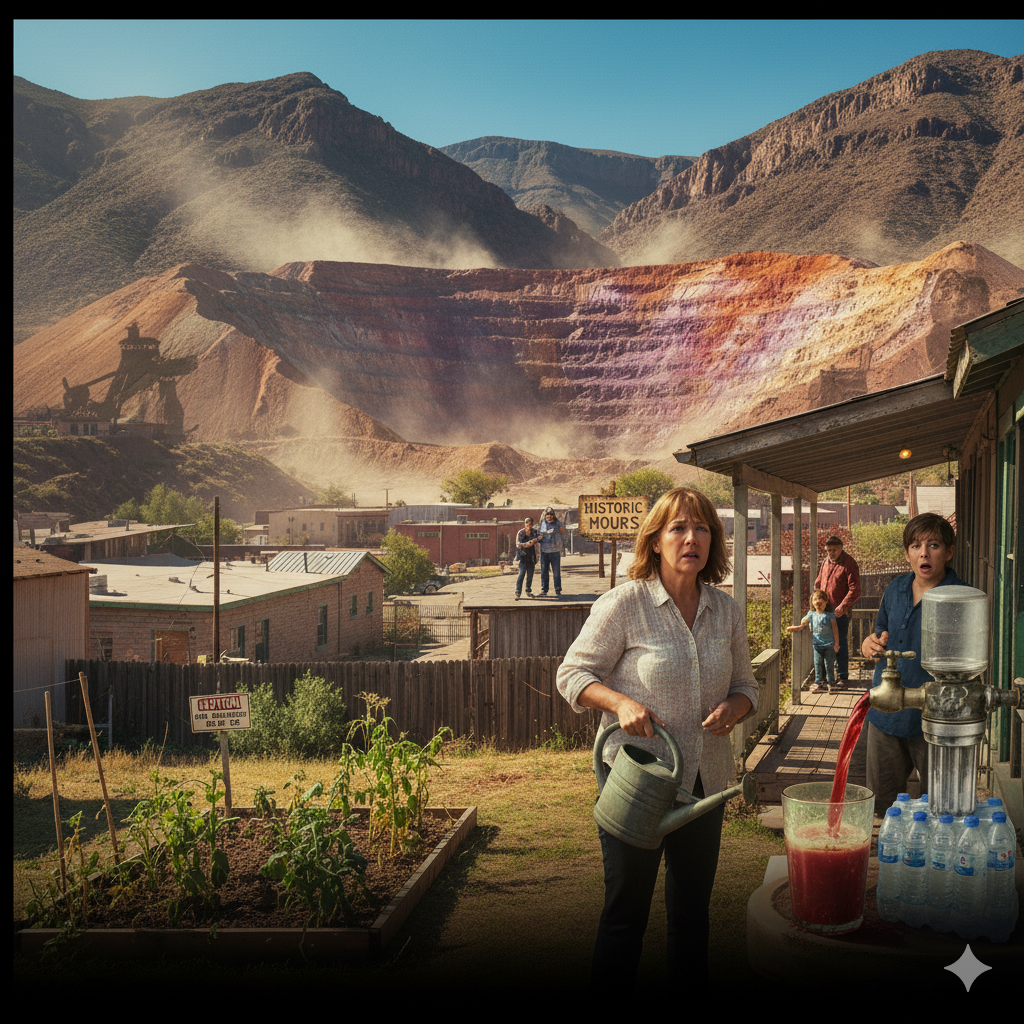Last updated on October 29, 2025
The beauty of Bisbee is dramatic and undeniable. The town is nestled in a steep canyon, surrounded by the rugged, sun-drenched Mule Mountains. The vistas are stunning. But this picturesque landscape is also a crime scene. For nearly a century, this was one of the most productive copper mining districts on Earth. That industry produced immense wealth for a distant few and left behind a legacy of profound environmental contamination that poisons the very ground, water, and air of the town you are considering calling home.
The most visible scars are the massive tailing piles—mountains of crushed rock from which the valuable ore was extracted—that loom over the town. These are not natural hills; they are man-made monuments to industrial waste. And they are not benign. These piles are laced with heavy metals and other toxic substances: arsenic, lead, and manganese, to name a few. Every time the wind blows, and the wind in the high desert blows relentlessly, it picks up fine dust from these piles and deposits it all over town—on your car, in your yard, on your windowsills, and in your lungs.
This isn’t a hypothetical risk. It is a daily, airborne threat that the town’s boosters and real estate agents conveniently fail to mention. The long-term health effects of chronic exposure to low levels of heavy metal dust are well-documented and deeply unsettling. But in Bisbee, this ever-present danger is simply accepted as part of the scenery. The multi-colored, terraced slopes of the Lavender Pit, the enormous open-pit mine that is now a tourist attraction, are seen as beautiful, not as a permanent, toxic wound in the earth.
The contamination is not just in the air; it is in the water. As rain and snowmelt percolate through the mountains—mountains that were hollowed out, fractured, and filled with mining waste—they leach these same heavy metals into the groundwater. The Environmental Working Group’s tap water database tells a chilling story. It shows that Bisbee’s water contains arsenic at levels that are hundreds of times higher than what is considered a safe public health goal. While the levels may meet the federal government’s legal—and woefully outdated—limit, they represent a significant, scientifically-backed cancer risk over a lifetime of consumption.
When you drink a glass of water from a tap in Bisbee, you are ingesting the liquid legacy of a century of unchecked mining. You can buy bottled water, of course, and many residents do. You can install expensive reverse osmosis systems. But the contamination is a fundamental reality of the local water supply. It is a constant, invisible threat that permeates daily life.
This contamination extends to the soil itself. The ground in and around Bisbee has been saturated with the byproducts of mining for generations. This makes something as simple and wholesome as planting a backyard vegetable garden a game of Russian roulette. Is the soil your carrots are growing in contaminated with lead? Are your tomatoes absorbing arsenic? Without expensive and comprehensive soil testing, you have no way of knowing. The dream of a self-sufficient, back-to-the-land lifestyle crumbles when the land itself is poisoned.
Unlike officially designated Superfund sites, there is no large-scale, federally-mandated cleanup happening in Bisbee. The mining companies are long gone, their profits secured, leaving the local community to live with the consequences. The town’s economy is now dependent on selling a romanticized version of its mining past—mine tours, a mining museum, historic landmarks. This economic reality creates a powerful disincentive to ever fully acknowledge or address the toxic legacy of that same history. To do so would be to shatter the carefully crafted tourist illusion.
So the poison remains, a silent, persistent feature of the environment. It is the invisible counterpart to the town’s visible charm. When you look at the beautiful mountains surrounding Bisbee, you must remember that they are not pristine. They are the source of a slow, creeping poison that contaminates the air you breathe, the water you drink, and the ground you walk on. This is the price of Bisbee’s picturesque setting, a price that is paid not in dollars, but in the long-term health of its residents.
